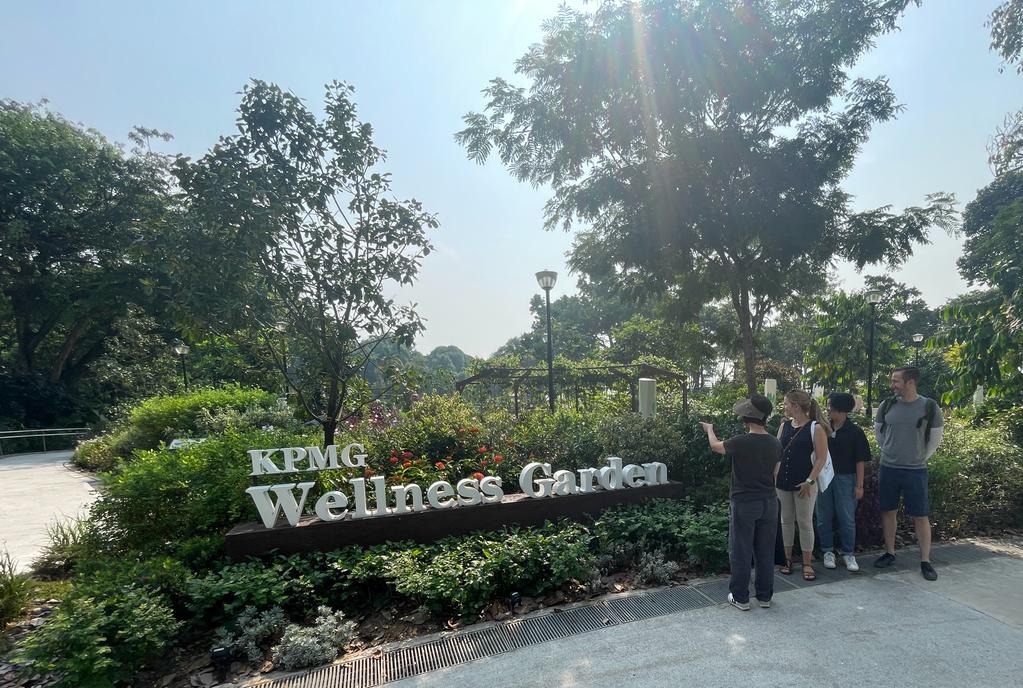Date: 27 February 2025 Time: 9:00 AM – 12:00 PM Location: East Coast Park NParks Office & KPMG Wellness Garden On a bright morning in late February, a group of 21 students gathered at the East Coast Park NParks Office for an insightful session on therapeutic garden design. Facilitated by NParks employees Afiq Fairuz (Landscape Architect and garden designer) and Dr. Agnieszka Olszewska-Guizzo, the Read More
Tag: contemplative
ICUH 2024: Green Care for Mental Health Equity and its Main Players
We are excited to share that our CEO, Dr. Agnieszka Olszewska-Guizzo, and our Gender Equality Officer, Dr. Weronika Gąsior, participated in the International Conference on Urban Health (ICUH2024) in Marrakesh, Morocco, to present the results from Work Package 2 of the GreenMe project. The conference, hosted by the International Society for Urban Health (ISUH), Read More
Nature in Mind: An Interview with Dr. Anna María Pálsdóttir
Dr. Anna María Pálsdóttir is the Senior Lecturer/Assistant Professor in Environmental Psychology at the Swedish University of Agricultural Sciences (SLU), the Department of People and Society. She is a professional horticulturist with a BSc in Biology & Horticulture Sciences and a MSc and PhD in Landscape Planning and Environmental Psychology. Dr. Pálsdóttir works with conceptual Read More
Visiting Nature’s Embrace: A Singapore Exhibition Showcasing the Healing Effects of Nature
With support from Singapore’s National Parks Board, the Mind Art Experiential Lab of the National University of Singapore’s Yeo Boon Khim Mind Science Centre has curated the “Nature’s Embrace: A Gift to the Mind” exhibition. Open for appointment-based viewing until September 2024, the exhibition allows visitors to explore the connection between nature and mental well-being through serene visuals and calming nature melodies. Not to mention, it also provides techniques that can improve the mind-body-nature connection that you can try at home.
Therapeutic Landscapes, Hospice Care, and Fight Club: An Interview with Landscape Architect Anna Artemeva
“The important thing to understand is that a hospice is not a place where people die, but rather a place where they live out their final stage of life.” Anna Artemeva, Landscape Architect
CLM field session in Singapore – How to recognize Contemplative Landscape features in the park
On 6.10.2023 upon the National Parks Board (NParks Singapore) request, Dr Agnieszka Olszewska-Guizzo conducted the onsite consultation and training for the NParks designers and officers regarding the use of the Contemplative Landscape Model (CLM). NParks is currently rolling out the CLM in their parks and actively using this evidence-based tool [read more here]. We’re hoping Read More
“Neuroscience for Designing Green Spaces: Contemplative Landscapes” – A Revolutionary Book
Experience the power of “Neuroscience for Designing Green Spaces: Contemplative Landscapes” – a revolutionary book by Dr. Agnieszka Olszewska-Guizzo. This comprehensive guide was released on May 30, 2023. It revolutionizes landscape design through an innovative approach rooted in neuroscience. Unveiling Contemplative Landscape Design Delve into the concept of Contemplative Landscape Design, meticulously crafted over Read More
Presentation at the International Conference for Environment and Human Health | HK
18 of August 2022 10:40 AM Hong Kong Time (GMT+8) *online Dr Agnieszka Olszewska-Guizzo to present “Neuroscience for Designing Urban Green Spaces: Contemplative Landscape Exposure for Mental Health” at the International Conference for Environment and Human Health hosted by Research Centre for Environment and Human Health in Hong Kong. https://youtu.be/GZObrp0q9i4
How can VR improve mental health
Eascape, a new VR relaxation app created by neuroscientists and landscape architects, makes it possible to benefit from the healing power of nature without leaving home. The test version of the app has just been launched, as the whole world deals with the consequences of coronavirus waves and lockdowns. It is not a coincidence. In Read More
NeuroLandscape featured in BBC “My Perfect City”
NeuroLandscape featured in BBC “My Perfect City” Series episode which was released on: 30 Dec 2020 New episode of the BBC World Service “My perfect city” features Dr Agnieszka Olszewska-Guizzo among other experts. They discuss Singapore as a city which attempts to improve residents’ mental wellbeing through urban design. Generally, people in cities are likely Read More









